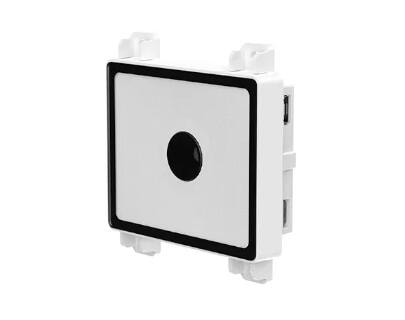How Are Barcode Scanners So Accurate?
In the modern world of retail, logistics, and inventory management, the humble barcode scanner plays a pivotal role. It's the unassuming device that swiftly decodes those black and white lines into actionable information. But have you ever wondered how barcode scanners achieve such remarkable accuracy? In this article, we delve into the technology behind barcode scanners and explore the mechanisms that make them exceptionally precise.
The Anatomy of Barcode Scanning
Before delving into the accuracy of barcode scanners, let's understand how they function. Barcode scanners use light to read the pattern of black and white lines, also known as the barcode. These lines represent encoded information that can range from product details to inventory numbers. The scanner captures the reflected light from the barcode and converts it into digital data, which is then decoded and processed.
Laser Scanners and Imaging Scanners
There are two primary types of barcode scanners: laser scanners and imaging scanners. Both types use different methods to achieve accuracy in capturing barcode data.
1. Laser Scanners: Laser barcode scanners emit a thin beam of light, usually red, that sweeps across the barcode. The light reflects off the white spaces between the lines and is detected by a photodiode or light sensor in the scanner. By measuring the changes in light intensity as the beam moves across the barcode, the scanner can decipher the pattern of lines and spaces.
2. Imaging Scanners: Imaging scanners, also known as camera-based scanners, capture an image of the entire barcode using a camera sensor. These scanners take a snapshot of the barcode and then use software to process the image, identifying the different lines and spaces based on contrast and pixel patterns.
Precision Mechanisms
The accuracy of barcode scanners can be attributed to several precision mechanisms:
1. Optics: The optics of a barcode scanner are designed to focus and direct the light onto the barcode and then collect the reflected light. High-quality optics ensure that the captured light is clear and distinct, contributing to accurate data capture.
2. Light Sources: Laser scanners use a laser diode to generate a concentrated and precise beam of light. Imaging scanners use LED lights to provide even illumination across the barcode. The specific wavelengths of these light sources contribute to the accuracy of reading the barcode's lines and spaces.
3. Sensors and Cameras: The sensors or cameras within barcode scanners are highly sensitive and designed to capture subtle changes in light intensity. These components enable the accurate detection of variations between the dark lines and light spaces of the barcode.
4. Software Algorithms: Both laser and imaging scanners rely on advanced software algorithms to process the captured data. These algorithms analyze the patterns of light and dark areas, deciphering the encoded information accurately.
5. Auto-Focus and Image Enhancement: Imaging scanners often incorporate auto-focus mechanisms and image enhancement techniques to ensure that the barcode is captured clearly, even if the scanner is held at different distances or angles.
Application in Various Industries
The accuracy of barcode scanners finds application in a wide range of industries beyond retail, including manufacturing, healthcare, and logistics. Barcode technology enables precise inventory management, prevents errors in order fulfillment, and enhances efficiency in supply chain operations.
Conclusion
In conclusion, the accuracy of barcode scanners is the result of a harmonious interplay of advanced optics, light sources, sensors, cameras, and software algorithms. These components work together to ensure that even the most intricate barcode patterns are captured and decoded accurately. Whether it's a laser scanner's focused beam or an imaging scanner's camera-based approach, barcode scanning technology continues to evolve, setting the standard for accuracy and reliability in data capture across industries. We are a barcode scanner supplier. If you are interested in our products, please contact us now!
Related:
Embedded Barcode Scanner Module
Having Problems Reading Your Barcodes? Here's How to Fix It
Do Barcode Scanners Use Infrared?
How Are Barcode Scanners So Accurate?
What Makes a Barcode Scanner Work?
Understanding Barcode Scanner Programming
What is the Scan Engine for Barcodes?
1D 2D Passport Wired Handhld Barcode Scanner
1D 2D Wired Handheld Barcode Scanner
1D 2D Wired Handheld Terminal Scanner
Bluetooth 2.4 Wireless Handheld Barcode Scanner
Barcode NFC Card Access Control Reader
Touch key Barcode NFC Card Access Control Reader
Ultra-thin Access Control Card Readers


